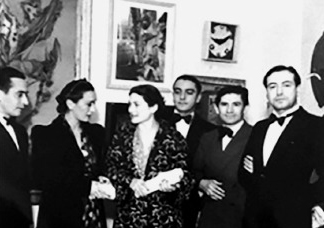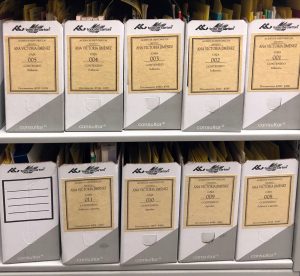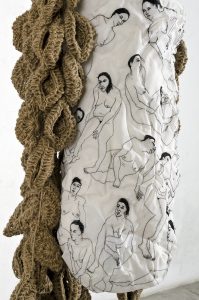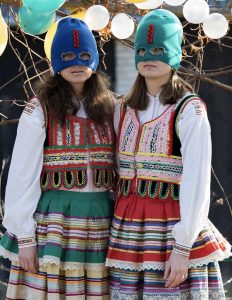Mexico City, Bonilla Artigas Editores.
By Karen Cordero Reiman.
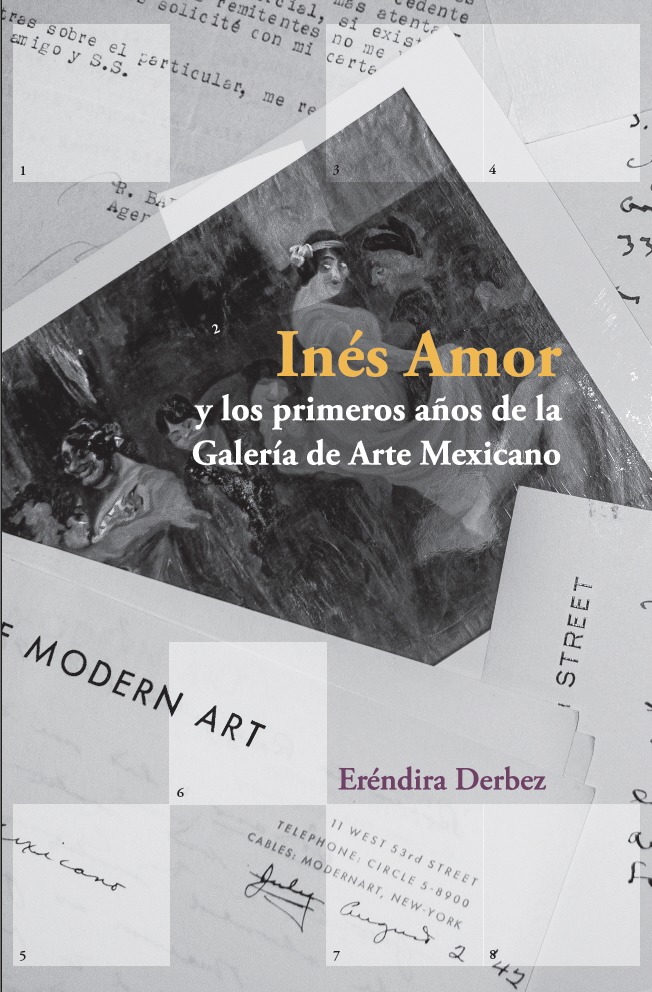
Cover of the book Inés Amor and the Early Years of the Galería de Arte Mexicano by Eréndira Derbez.
The volume Inés Amor y los primeros años de la Galería de Arte Mexicano (Inés Amor and the Early Years of the Galería de Arte Mexicano) by Eréndira Derbez is an indispensable contribution to the study of modern Mexican art and to feminist scholarship on Latin American culture. It brings visibility, recognition, and historical perspective to the processes of art management in Mexico during the 1930s and 1940s through meticulous research based on the extraordinary archives of the Galería de Arte Mexicano (GAM) and the Fournier Amor family, alongside the careful revision and critical analysis of a wide range of bibliographic and periodical sources, as well as pertinent interviews. Moreover, Derbez’s authorial voice and writing strategy adopt a clear and direct feminist stance in multiple ways, enriching and distinguishing this book in significant manners.
The author, who is both an art historian and a visual artist specializing in drawing and illustration, clearly outlines the personal journey that led her to the GAM archives and, ultimately, to the subject of this book. She acknowledges the serendipitous circumstances that granted her privileged access to the visual and verbal primary sources that inform her narrative. Rather than compartmentalizing the diverse aspects of this study—which originated as her master’s thesis in Art Studies at the Universidad Iberoamericana in Mexico City—Derbez weaves together multiple threads: the social environment, the personal and family lives of Inés Amor and her sister Carolina, the political and economic context, and the dynamics of the art world and cultural system. This tapestry consistently highlights a critical perspective rooted in gender studies and a commitment to transforming the patriarchal narratives that have historically excluded many women whose work was foundational to the development of artistic culture—women who invented and activated the very scaffolding that supports it. In this way, Derbez paints a vivid portrait of Inés Amor and her development of the GAM as an institution of artistic and political mediation, grounded in the intelligence, intuition, and insight that allowed her to create a highly personal yet deeply professional management style. She also demonstrates how these elements intersected with the characteristics of the presidential period of Lázaro Cárdenas (1934-1940) and the international rise of post-revolutionary Mexican art, which Amor engaged with from a creative, humanistic, and independent position.
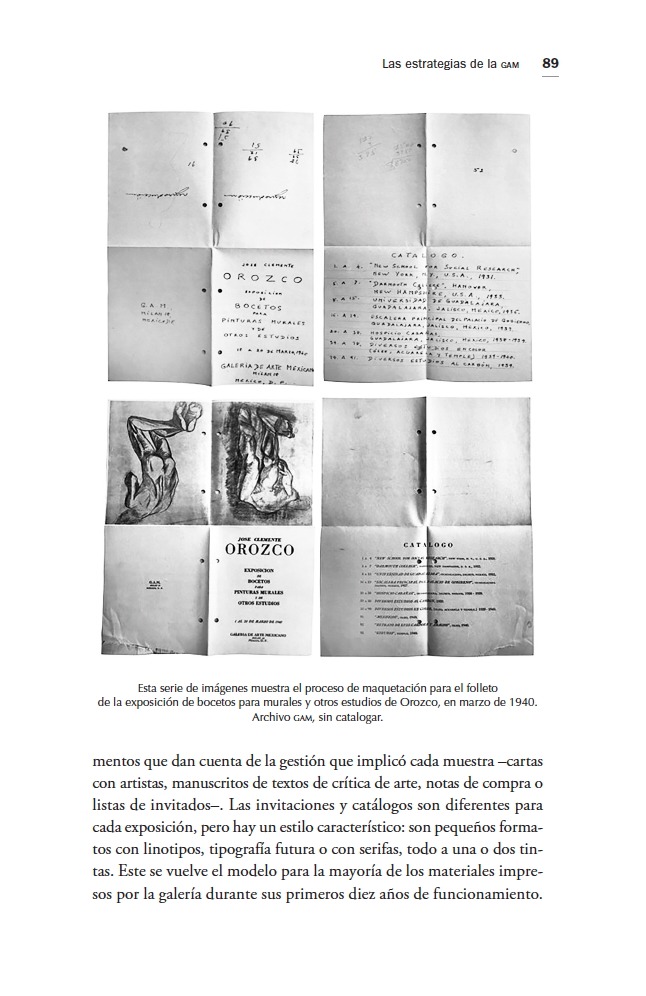
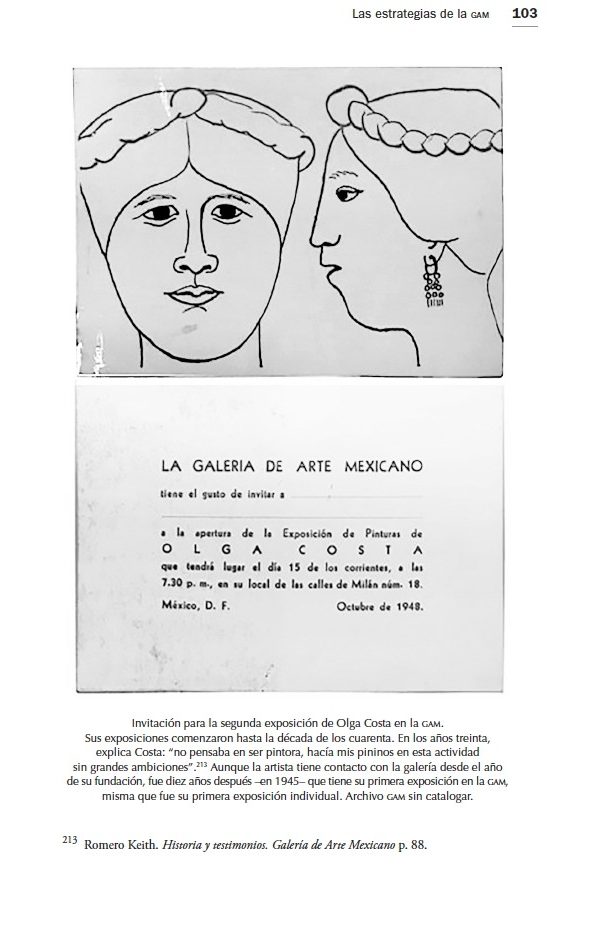
Documentation of the layout process for the brochure of the exhibition of sketches by José Clemente Orozco, March 1940. Source: GAM Archive. Page 89, Derbez, 2024.
Invitation to Olga Costa’s second exhibition at the GAM, October 1948. Source: GAM Archive. Page 103, Derbez, 2024.
The archive is central not only to the author’s research methodology but also to the theoretical contributions that emerge from her narrative. The fact that Inés Amor organized the gallery’s operations and her work as a cultural manager through detailed records of artworks, processes, and trajectories—a repository which survives and remains active today—is both an example and a metaphor for the style of work that defined her decisive contributions to the Mexican and international cultural spheres. Her systematic collecting of information and documentation, combined with an expansive and astute aesthetic perspective that embraced diverse currents and media, as well as her brilliant management of her social network and her knowledge base, allowed her early intuitions to solidify into an enterprise that enabled both her and others to shape the aesthetic tastes of art consumers and collectors, and successfully exhibit, sell, and promote post-revolutionary Mexican art and the work of subsequent generations. Inés Amor did not merely engage in the commerce of art; she transformed her gallery into what Derbez calls a “parastatal entity” that played a key role in organizing international exhibitions and shaping collections.
The story told in this book—written in a style that is fluid and clear, yet subtle and profound in its analyses—becomes captivating as it explores aspects rarely addressed in conventional historiography. These include, for example, the xenophobia in the Mexican art system or the tension between Diego Rivera’s valuable contributions to the Amor sisters’ aesthetic education and his generous support for the gallery’s project, alongside Inés’s resistance to his attempts to impose his narrow nationalist criteria, often tinged with misogyny and homophobia. Throughout the text, there is an awareness of how being a woman shaped the trajectory of Inés Amor and the paths of her female peers, but it also highlights how Amor’s particular way of living as a woman presented a model that resisted stereotypes and empowered her to achieve her goals.
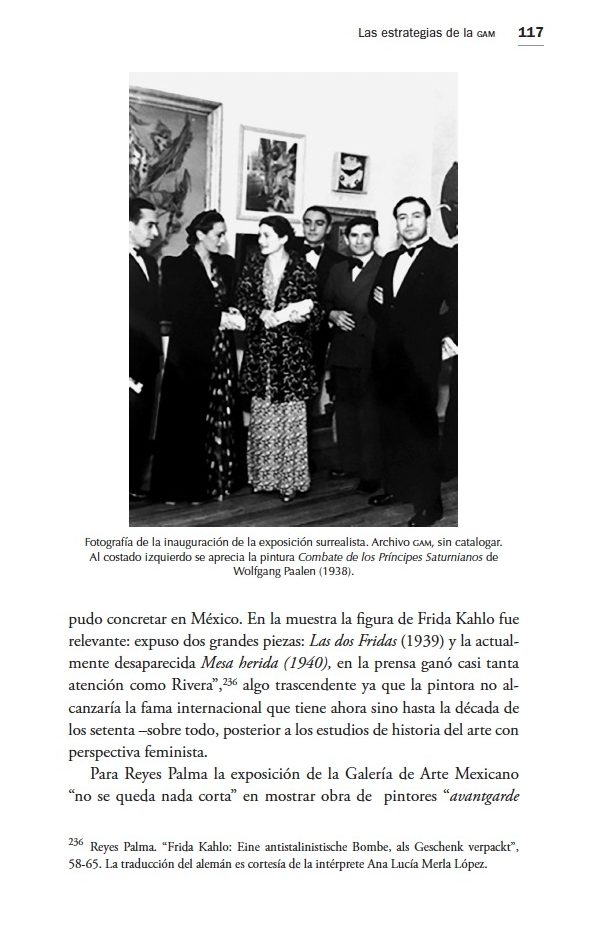
Photograph of the inauguration of the International Exhibition of Surrealism at the GAM, 1940. Source: GAM Archive. Page 117, Derbez, 2024.
Furthermore, while the text delves into Inés’s fundamental role as a cultural manager, making visible aspects of her development and decision-making that had been absent in the existing literature about her and her field of action, the inclusion of carefully selected images from the GAM archive also allows the book’s readers to immerse themselves in the atmosphere and materiality of another era, as well as in the daily work of the gallery. Through invitations (sometimes mock-ups with handwritten annotations); photographs of events, artworks, and spaces; drawings; letters; receipts; and other testimonies of the GAM’s work process, the author invites us to share in the joy of discovering unpublished documents that reveal the subtle complexity of the gallery owner’s work. It is these nuances and unique perspectives offered by the archive that enable Derbez to carry out her revalorization not only of cultural management work but also of much of the essential labor performed behind the scenes by women in the art system—work that allows the development of distinctive political stances and models of action and interaction.
In this way, Inés Amor and the Early Years of the Galería de Arte Mexicano not only contributes to the renewal and enrichment of scholarship on modern Mexican art but also offers conceptual, methodological, and vital perspectives that advance the collective effort to narrate the field of culture from the standpoint of other subjectivities and power relations.
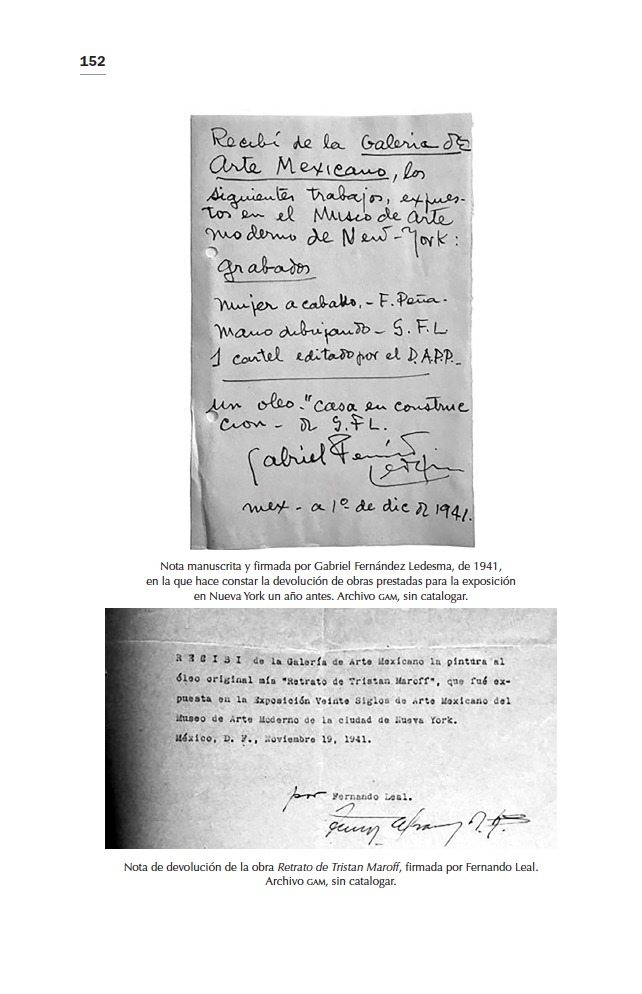
Receipts for artworks, 1941. Source: GAM Archive. Page 152, Derbez, 2024.
Eréndira Derbez, Inés Amor y los primeros años de la Galería de Arte Mexicano. Mexico City.
Bonilla Artigas Editores, 2024.
200 pages. ISBN: 978-607-88-3893-6.
